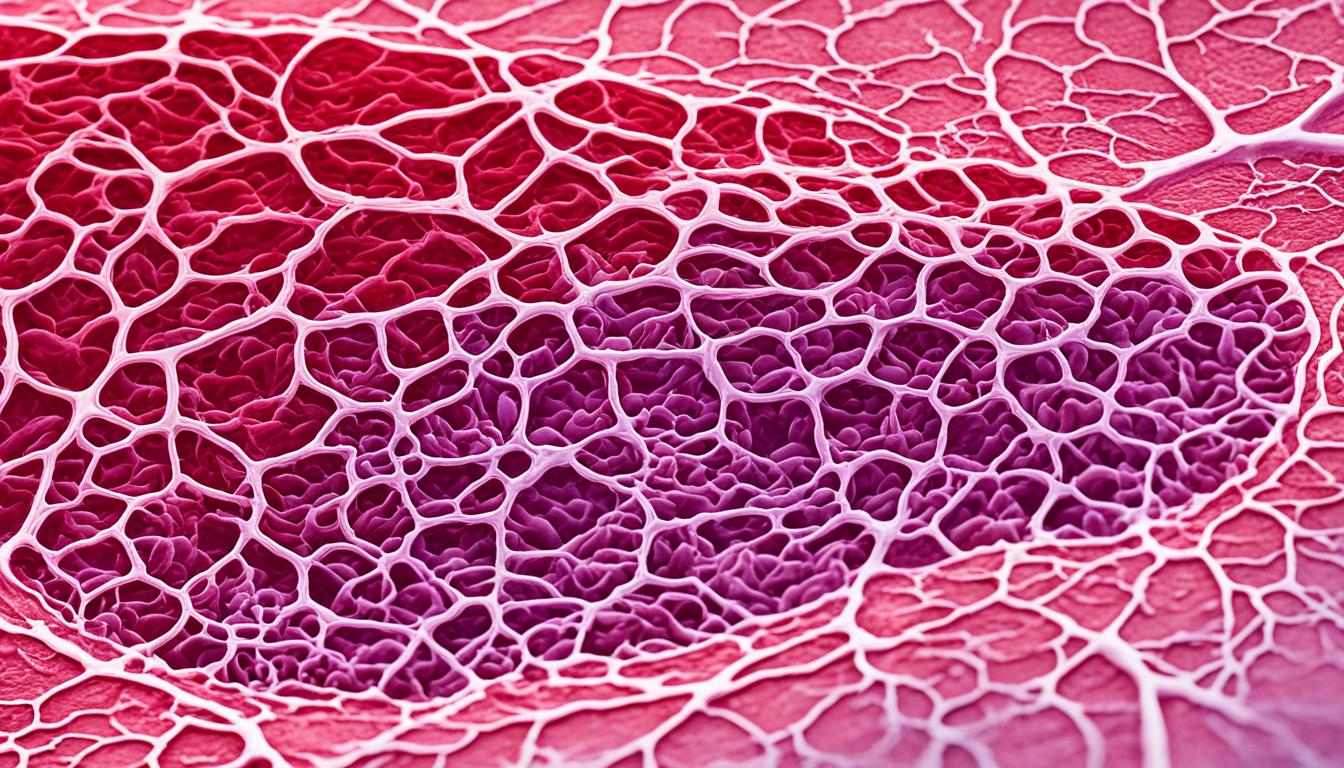Hemangiomas are the most common benign tumor seen in infants. They’re often called “strawberry marks” because of how they look.
They form when cells grow too much. There are two types: those present at birth and those that show up later and grow quickly before getting smaller.
The cause of hemangiomas isn’t fully clear. Scientists think it involves certain cells and stress. These growths mostly impact white babies, especially girls, and often appear on the head and neck.
Hemangiomas go through phases: they grow, then stop, and finally shrink. Most of the time, they go away without any treatment. But sometimes, they need help to fade. This help can come in the form of medicine, topical solutions, or even surgery.
Key Takeaways:
- Hemangiomas are the most common benign tumor of infancy, characterized by endothelial cell proliferation.
- They can be classified as congenital or infantile hemangiomas, with infantile hemangiomas being more common.
- Infantile hemangiomas primarily affect Caucasian infants and have a higher prevalence in females.
- The natural history of infantile hemangiomas involves three phases: growth, plateau, and involution.
- While most hemangiomas resolve on their own, complicated cases may require treatment options such as oral medications, topical treatments, laser therapy, or surgical excision.
Hemangioma Symptoms and Diagnosis
Hemangiomas can show up in different ways depending on where they are and how big they’ve grown. If they’re on the skin, they might look like red scratches at first. Then, they can turn into bumps or spots that are a deep red color. Inside the body, a hemangioma might cause problems like feeling sick, throwing up, belly pain, or not feeling hungry. These signs show up when the growth is in the stomach or liver areas.
Finding out if someone has a hemangioma often starts with a doctor looking at the area closely. They may also use special pictures of the inside, like ultrasound or MRI scans, to be sure. For deeper hemangiomas, these scans help see how far they reach underneath. Sometimes, a small piece of the skin or growth is taken out to check more closely.
| Location | Symptoms |
|---|---|
| Skin | Small red scratches or bumps resembling birthmarks |
| Internal (GI/Liver) | Nausea, vomiting, abdominal discomfort, loss of appetite |
When doctors think a hemangioma is likely, they do a detailed checkup and talk to the person about their health background. How the growth looks and where it’s found, along with the person’s symptoms, help make the diagnosis. But, using tests like ultrasound, MRI, or CT scans gives a clearer picture. These tests are important because they guide the best treatment and watch for any problems that might come up.
Causes and Risk Factors of Hemangioma
Hemangiomas are common in infants, but we don’t fully know why they happen. Some theories say that hypoxic stress can increase specific proteins, moving endothelial progenitor cells. Another theory is that placental trophoblasts play a role by turning into stem cells for hemangiomas.
Infantile hemangiomas are linked to vasculogenesis, where new vessels form from existing ones. Most hemangiomas occur randomly. But, some risk factors stand out. They happen more in Caucasian infants and more in females. Certain conditions during pregnancy, like low birth weight or prenatal hypoxia, are also linked.
There might be a connection to inheritance, with a possible autosomal dominant pattern. However, researchers haven’t found the exact genes yet.
Hemangioma Management and Stem Cell Therapy
Hemangiomas often go away without any special treatment. But sometimes, treatment is needed for more severe cases. Stem cell therapy shows great promise in these situations. It uses stem cells to help heal the damaged area.
Doctors use stem cell therapy to make these growths get smaller. This helps the area return to normal. Treatment like stem cell therapy is still being researched. We’re working to see how well it works in the long run.
There are other ways to manage hemangiomas too. These include using certain medicines, lasers, or even surgery. The right treatment is picked based on the size and type of the hemangioma, and the patient’s health.
Regular check-ups and teamwork among doctors are key for good care. Thanks to modern medicine, doctors can create unique treatment plans. This may include a mix of new and old treatments. This helps give patients the best chance at getting better.

